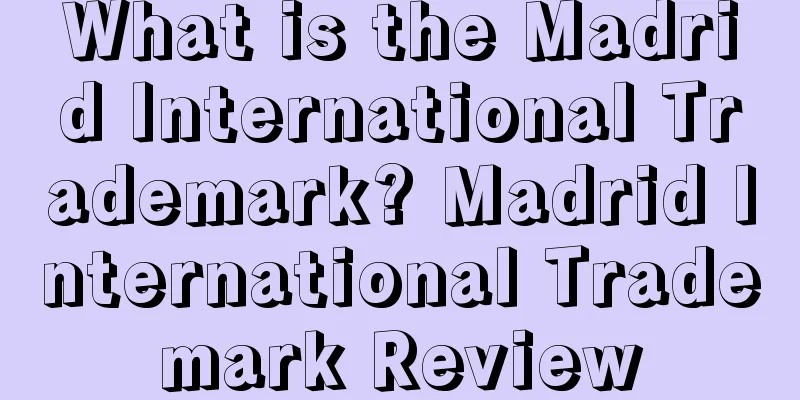|
The internal competition of the platform has intensified, and the traffic of sellers has dropped sharply, and they are looking for new growth and channels. Some time ago, the American e-commerce platform Chewy announced that it would open to Chinese sellers and launched three cooperation models for sellers to choose from: Dropship (seller supply + platform pricing), procurement (procurement of sellers' overseas warehouses), and import (factory sellers' B2B export) . The Dropship model is similar to Temu's semi-hosting model, which requires sellers to have inventory in the United States, and Chewy will set prices and be responsible for logistics, and sellers only need to supply goods. The cross-border e-commerce industry has developed to date and has spawned many overseas expansion models: from the initial policy supervision model, to the later platform full hosting, independent site/DTC, industry belt collaboration, and even comprehensive ecological overseas expansion. The gameplay has become more and more diversified as the market environment changes. In 2025, the scale of China's cross-border e-commerce exports has exceeded 3 trillion US dollars . Behind the surge in "quantity" is a profound change in "quality". From the early "price dumping" to today's "ecological output", the overseas model of Chinese companies is undergoing an upgrade from "tactical trial and error" to "strategic reconstruction" . In view of the current cross-border e-commerce industry's most popular overseas models, Chuhai.com compares and analyzes different models: For most sellers, especially those who are new to the cross-border e-commerce industry, they will rely on third-party platforms, such as Amazon, Temu, AliExpress, Shopee and other cross-border e-commerce platforms for sales, relying on the platform's traffic and infrastructure. Take Amazon and Temu as examples: Amazon: Sellers operate according to platform rules and rely on A+ certification and brand flagship stores to enhance trust, but face high commissions (15%-20%) and the risk of being blocked. Temu: It started with a fully managed model, where sellers only supply goods and the platform is responsible for operations and logistics, but they must accept low-price strategies and strict cost control. The advantages and disadvantages of both are also obvious: Traffic advantage: The platform has its own user base, which reduces the difficulty of acquiring customers. For example, Temu quickly acquires customers through social fission. Low threshold to start: suitable for novices to realize cash quickly, without the need to build their own website and technical investment. Convenient logistics: The platform integrates warehousing and logistics, such as Amazon's FBA. Profit compression: With the combination of commissions, advertising fees, and logistics costs, the profit margin of small and medium-sized sellers is less than 10%. Rule restrictions: There is a high risk of platform policy changes, such as Amazon’s account suspension wave. Severe internal competition: fierce homogeneous competition and short product life cycle. How can we better adapt to the platform's operating rules and follow the trend ? On March 21, the afternoon session of the 4th CHWE Global Cross-border E-commerce Exhibition in Hall 1 will feature a special Amazon global store operation session, which will explain the current policies and operation tips to sellers in depth. At the same time, from March 20 to 22, all major e-commerce platforms will be on site to provide sellers with various consultations and tips! In order to build their own "walls", some sellers with technology and brands will choose to use technical means to build brand official websites. Compared with e-commerce platforms, they can reach consumers more directly and gain control of user data and brand autonomy. A typical example is Anker Innovations, which was recently on the headlines for distributing 800 million yuan in year-end bonuses to employees, and nearly 500 employees earned more than one million yuan, attracting a lot of attention and envy. Anker Innovations achieved brand premium through independent websites, with a gross profit margin of more than 50% . It invested heavily in R&D to ensure product quality (Trump even uses Anker's power bank) and combined SEO and content marketing to increase repurchase rates. Another brand I want to share with you is Tenikle, a cross-border e-commerce brand that focuses on multifunctional mobile phone holders. Its official website design is simple and clear, highlighting the versatility and unique selling points of the product. The brand has achieved an annual sales growth of 200% through crowdfunding and social media marketing. In summary, the advantages and disadvantages of the independent station operation model are: Brand autonomy: Customizable user experience, such as Shoes of Prey’s 3D customization tool. High profit margin: Avoid platform commissions and have stronger premium capabilities. For example, Anker's power banks are priced higher than its peers. Data-driven: Optimize product strategies through user behavior analysis. High cost investment: The cost of acquiring traffic is high, and advertising costs can account for up to 30%. Technical threshold: It is necessary to build a multi-language and multi-currency payment system and optimize website performance. Operational complexity: logistics, customer service, and compliance, such as GDPR, need to be taken into account. On March 22, at Hall 1 of the 4th CHWE Chuhai.com Global Cross-border E-commerce Exhibition at the Shenzhen Futian Convention and Exhibition Center, Chuhai.com set up a special DTC session to help sellers who want to build independent websites share practical cases from 0 to 1.The hosting model is a new trend that has swept the cross-border e-commerce industry in recent years, represented by TikTok Shop, SHEIN, AliExpress, Shopee, and Lazada. Fully hosted sellers only need to supply goods, and the platform is responsible for operations, logistics, and after-sales, such as Temu's early model; semi-hosted sellers retain pricing rights, and the platform is responsible for part of the operation, such as AliExpress's "overseas hosting". Figure: Comparison of the full hosting models of various platforms previously produced by Chuhai.com Sellers can choose the full-service or half-service model based on their own supply chain and supply chain conditions . Chuhai.com also helps sellers to briefly analyze the advantages and disadvantages of the two models. Reduce operational difficulty: suitable for factories with strong supply chains but lack of e-commerce experience. Quickly enter the market: rely on platform resources to shorten the trial and error cycle. Limited profits: The bargaining power is low in the full-trust model, and the semi-trust model requires the assumption of logistics costs. Inventory risk: Stocking up in overseas warehouses requires a large amount of capital and has a low turnover rate. If you want to have a deeper understanding of the hosting model , you can sign up for the 4th CHWE Cross-border E-commerce Exhibition from March 20th to 22nd. At the TikTok official special session in Hall 1 on the afternoon of the 20th, Chuhai.com invited the TikTok Shop official to interpret the hosting model project on site. Compared with the previous models, the distribution model is more inclined to B-end or merchants with sources of goods, and sells in bulk through agents, wholesalers, Alibaba International Station or Chuhai.com Haibei Distribution. For example, Xuchang wigs, Haicheng toys and other industrial belts connect with global buyers through 1688; Saiwei Times serves corporate procurement needs through Amazon Business Purchase, etc. Large-scale sales: suitable for bulk orders, reducing the logistics cost of each piece. Risk diversification: rely on a stable customer base to reduce the impact of market fluctuations. Low profit margins: middlemen drive down prices, leaving limited profit margins. Weakened brand: Difficulty establishing direct consumer connections. In fact, in addition to the above modes, there are many more detailed divisions. In order to help sellers understand the differences between different modes more clearly, Chuhai.com also made a picture for sellers' reference: For more detailed operational skills for different models , you can scan the QR code below to sign up for the 4th CHWE Overseas Cross-border E-commerce Exhibition from March 20th to 22nd. More exciting content is waiting for you to be revealed on site!
|










